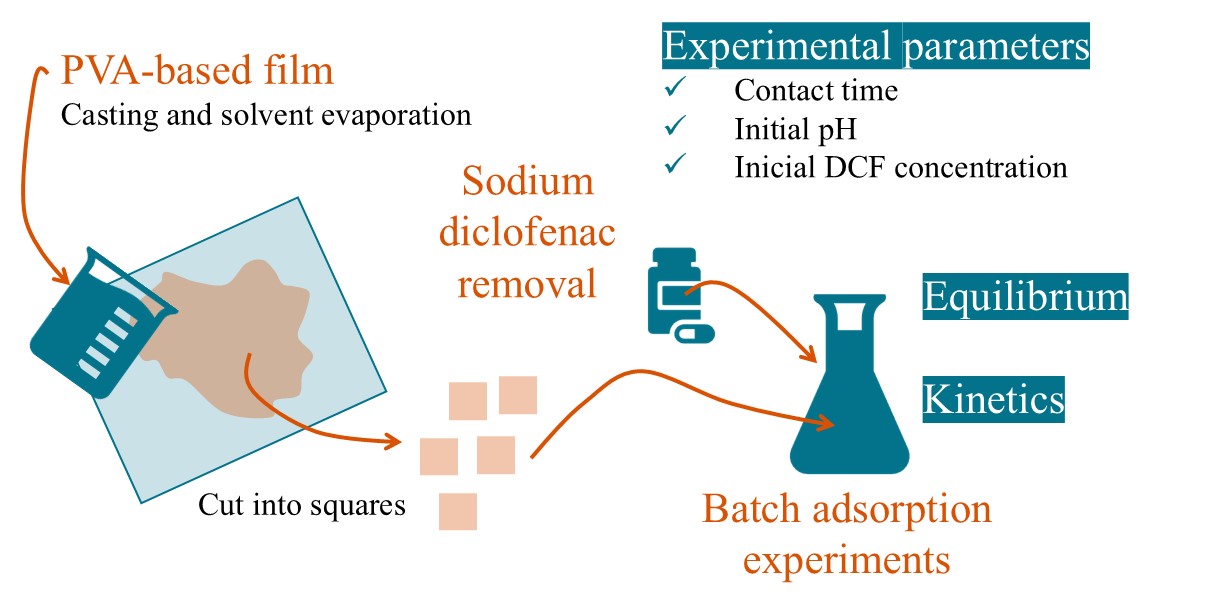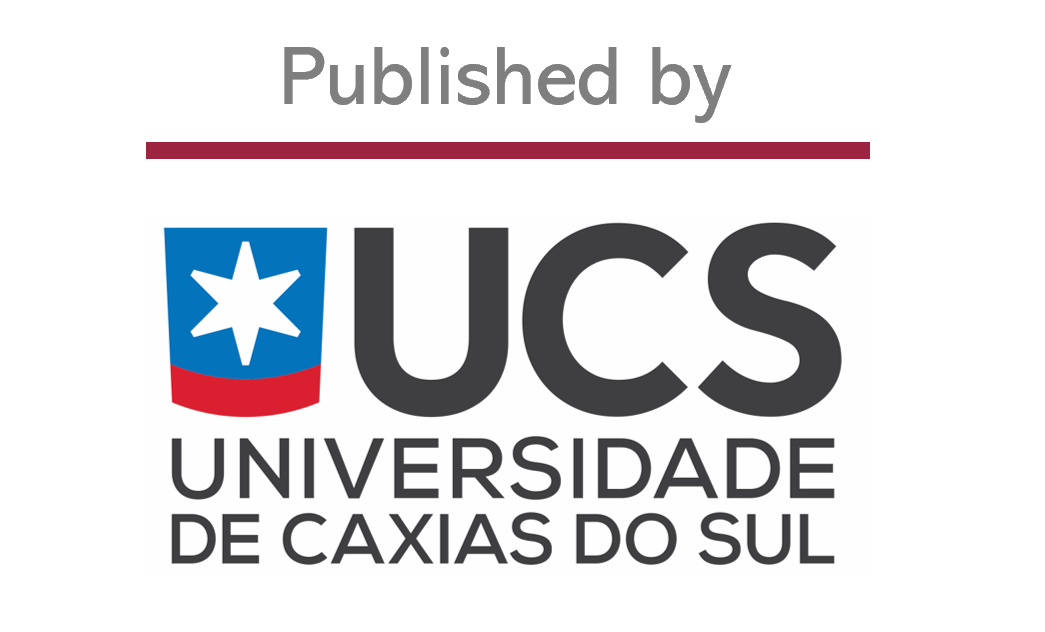Investigation of the adsorptive capacity of a poly(vinyl alcohol)-based film for sodium diclofenac in aqueous media
DOI:
https://doi.org/10.18226/23185279.e241305Keywords:
Poly(vinyl alcohol), citric acid, crosslinked film, sodium diclofenac, adsorption, isotherms, kineticsAbstract
Sodium diclofenac (DCF) has been detected in waters worldwide and is considered a micropollutant of emerging concern due to its potential toxicity in aquatic and terrestrial ecosystems. Traditional water treatment methods are unable to remove DCF completely from water, which makes adsorptive films a suitable alternative to address this challenge. In this context, the present study investigated the adsorptive capacities of a poly(vinyl alcohol)-based film for removing DCF from aqueous solutions. The effects of the initial DCF concentration and solution pH on the adsorption performance were evaluated, as well as kinetics and equilibrium isotherms. Regarding the results, DCF precipitation was observed within a pH range of 4.0-7.0, probably due to its limited solubility in acidic media. The optimal DCF concentration was found to be the lowest tested (2.5 mg L-1), yielding an equilibrium adsorption capacity (qe) of 0.511 mg g-1 and a DCF removal percentage (%R) of 23.4% within 90 min. Although the adsorption equilibrium was well described by the Redlich-Peterson isotherm despite the unusual behavior observed, pseudo-first and pseudo-second order kinetic models were satisfactory only at the initial concentration of 2.5 mg L⁻¹. Overall, the data set indicate that the film has a limited adsorption capacity, reaching saturation at low adsorbate concentrations. Nonetheless, these findings support further investigations at lower DCF concentrations to better understand the film’s adsorptive behavior under environmentally relevant conditions.

Downloads
Additional Files
Published
How to Cite
Issue
Section
License
Copyright (c) 2024 Juliana Zanol Merck, Camila Suliani Rota, Jocelei Duarte, Camila Baldasso, Marcelo Giovanela, Janaina da Silva Crespo

This work is licensed under a Creative Commons Attribution 4.0 International License.
Declaração de originalidade e cessão de direitos autorais
Declaro que o presente artigo é original, não está sendo tendo sido submetido à publicação em qualquer outro periódico nacional ou internacional durante o processo de revisão. Através deste instrumento, em meu nome e em nome dos demais co-autores, porventura existentes, cedo os direitos autorais do referido artigo à revista SCIENTIA CUM INDUSTRIA. Contudo, a reprodução total ou parcial impressa ou eletrônica pode ser feita desde que o autor comunique oficialmente à revista. Declaro estar ciente de que a não observância deste compromisso submeterá o infrator a sanções e penas previstas na Lei de Proteção de Direitos Autorias. Declaro estar ciente de que a não observância deste compromisso submeterá o infrator a sanções e penas previstas na Lei de Proteção de Direitos Autorias (Nº9610, de 19/02/1998).




